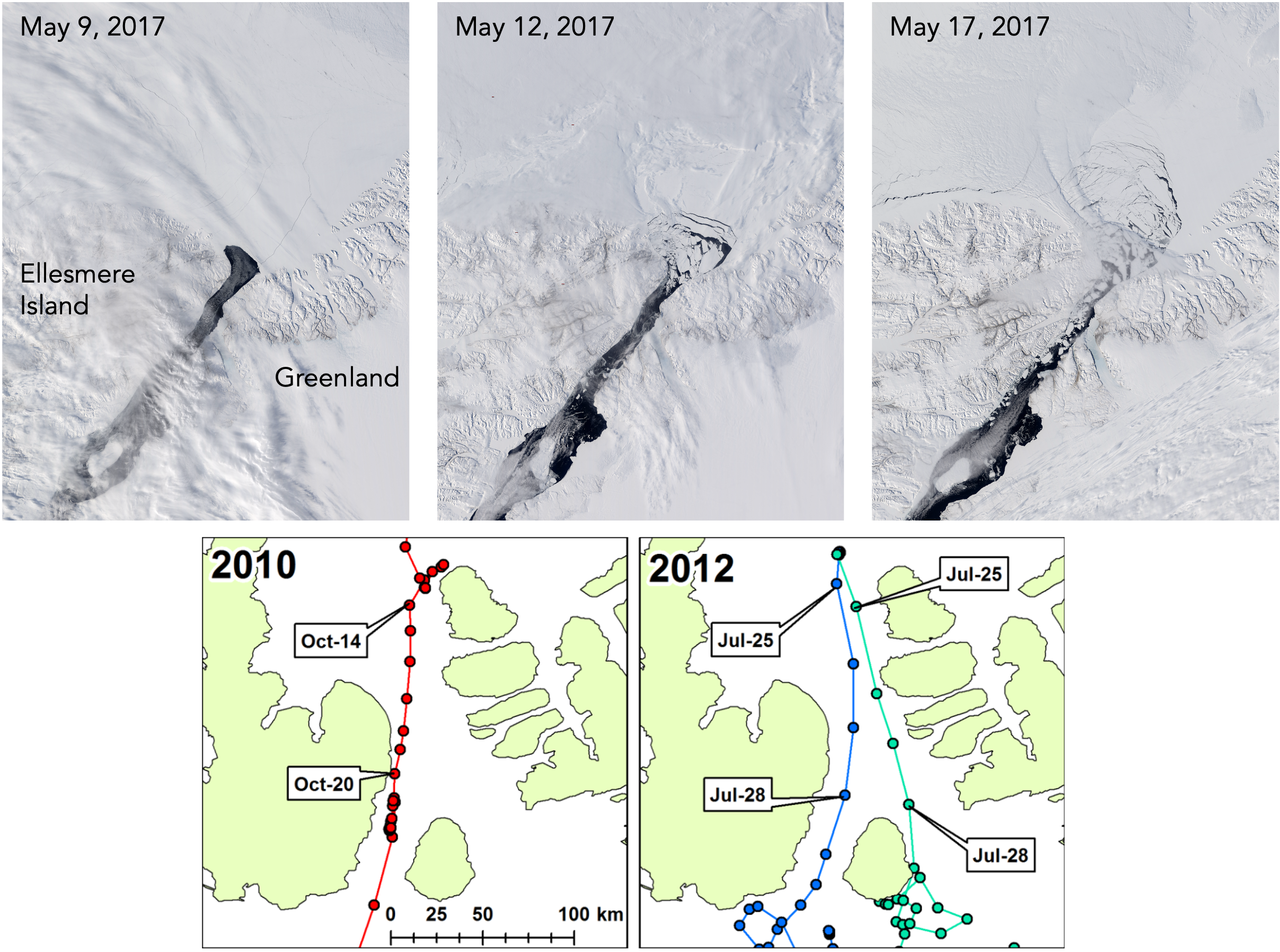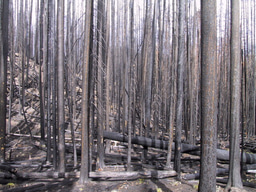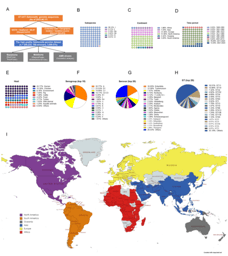The Last Ice Area: Thinning Ice, Growing Responsibility
Published in Earth & Environment and Sustainability

We first became interested in the Last Ice Area (LIA) during our study on the future abrupt reduction in summer Arctic sea ice using the Community Climate System Model1. While the model showed robust early abrupt sea ice declines, it consistently projected the persistence of sea ice within and to the north of the Canadian Arctic Archipelago (CAA) through the end of the century. This observation inspired the concept of a "Last Sea Ice Refuge" for ice-associated species, which we highlighted during a press conference at the American Geophysical Union meeting in 20102,3. Originally we thought that sea ice might persist in this region for decades longer than the rest of the Arctic.

(Analysis: climate.gov - Data : National Snow and Ice Data Center https://www.climate.gov/maps-data/data-snapshots/data-source/arctic-sea-ice-age)
In 2019, the Canadian government designated a portion of the LIA, located north of the Canadian Arctic Archipelago as the Tuvaijuittuq Marine Protected Area. In August 2024, interim protection for this area was extended for up to five years “while the Government of Canada works with partners to consider long-term protection”. Inuit communities are deeply invested in protecting the LIA’s unique ecosystem. Environmental organizations, including the World Wildlife Fund, have also long campaigned for the protection of the entire LIA to support the resilience of the Arctic ecosystem. While protecting the LIA will not stop loss of Arctic ice, it can provide interim habitat for ice-associated species (e.g. Pfirman and Lee 4), and the local communities which depend on them.
Despite the promising character of the LIA, we knew that the GCM used to project future sea ice conditions faced a limitation. These complex models, which are computationally intensive to run, lacked the resolution needed to simulate the narrow waterways of the Canadian Arctic Archipelago and Nares Strait. As a result, these areas were treated as barriers to sea ice, rather than open for transport. At the time, we accepted this limitation, knowing the thick, concentrated sea ice in the LIA sufficiently blocked transport through these waterways.

Since then, the warming trend in the Arctic, in-situ ice drifters and the use of satellite imagery have revealed an unexpectedly mobile pack ice with an anomalously large export of sea ice from the LIA through channels of the Canadian Arctic Archipelago and Nares Strait southward, toward warmer waters where sea ice typically melts5,6,7,8. Given this critical change, we understood the necessity of revisiting earlier projections to assess the impact of increased ice loss through these channels on the longevity of the LIA.
The limitation associated with spatial resolution persisted until recently, when some climate groups began running models at high resolutions on an exploratory basis, albeit with a limited number of ensemble members. The iHESP high-resolution Community Earth System Model project from Texas A&M (and analyzed here) is one such initiative.

Our newest study reveals that under this high-end forcing scenario, sea ice of the LIA thins and becomes more mobile, leading to increased southward export of sea ice. This transport results in the drainage of the LIA in just over a decade after the central Arctic Ocean becomes seasonally ice-free. While we understand the physical mechanism behind the decline – thinner ice is weaker and more mobile – the exact timing of the disappearance of the LIA is subject to uncertainties associated with natural variability and missing or incomplete physics included in the models.
It could be easy to misconstrue these findings as evidence that protecting the LIA is a lost cause, but they actually emphasize the vulnerability of the LIA and the necessity of stewardship initiatives. Curbing emissions and taking action to stabilize temperatures will ensure that the central Arctic and the LIA maintains some perennial thick sea ice and continue to form ice barriers that prevent sea ice export through the Canadian Arctic Archipelago.
References
1. Holland, M. M., Bitz, C. M., & Tremblay, B. (2006). Future abrupt reductions in the summer Arctic sea ice. Geophysical research letters, 33(23).
2. Pfirman, S. L., Tremblay, B., Newton, R. & Fowler, C. 2010a., The last Arctic sea ice refuge. American Geophysical Union, Fall Meeting 2010, abstract id. C43E-0592
3. Pfirman, S., Newton, R., Tremblay, B. L. & Kelly, B. P. 2010b. The last Arctic sea ice refuge? AGU Fall Meeting Press Conference https://www.youtube.com/watch?v=tDKVXKDoq_I
4. Pfirman, S and J.J. Lee, 2022. EcoChains: Arctic Futures digital game, Ask a Biologist, https://askabiologist.asu.edu/games-and-simulations/ecochains
5. Howell, S. E. L. et al. Recent changes in the exchange of sea ice between the Arctic Ocean and the Canadian Arctic Archipelago: Changes in Arctic Ocean-CAA Ice Exchange. J. Geophys. Res. Oceans 118, 3595–3607 (2013).
6. Howell, S. E. L. & Brady, M. The Dynamic Response of Sea Ice to Warming in the Canadian Arctic Archipelago. Geophys. Res. Lett. 46, 13119–13125 (2019).
7. Howell, S. E. L. et al. Sea ice transport and replenishment across and within the Canadian Arctic Archipelago, 2016–2022. The Cryosphere 18, 2321–2333 (2024).
8. Moore, G. W. K., Howell, S. E. L., Brady, M., Xu, X. & McNeil, K. Anomalous collapses of Nares Strait ice arches leads to enhanced export of Arctic sea ice. Nat. Commun. 12, 1 (2021).
Follow the Topic
-
Communications Earth & Environment

An open access journal from Nature Portfolio that publishes high-quality research, reviews and commentary in the Earth, environmental and planetary sciences.
Related Collections
With Collections, you can get published faster and increase your visibility.
Geology of the Moon
Publishing Model: Hybrid
Deadline: Jan 31, 2026
Drought
Publishing Model: Hybrid
Deadline: Dec 31, 2025




Please sign in or register for FREE
If you are a registered user on Research Communities by Springer Nature, please sign in